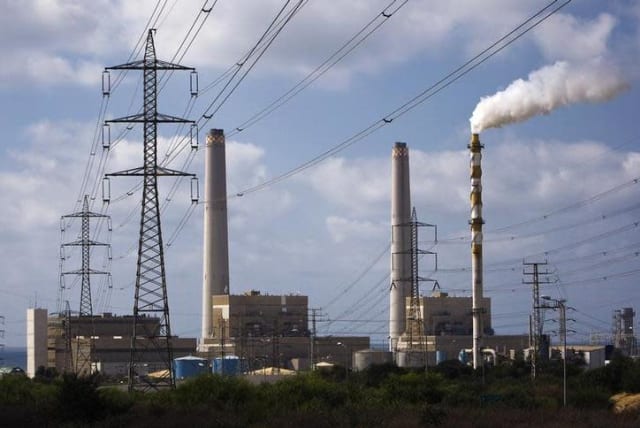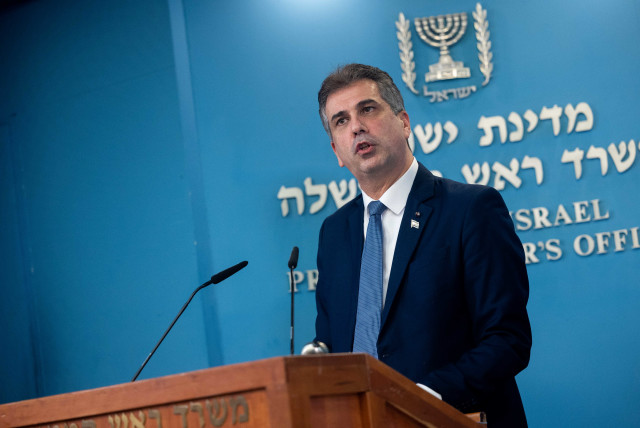Israel approves controversial plan to construct first power plants in West Bank

According to Israel’s Energy and Infrastructure Minister Eli Cohen, “For the first time in the history of the state, [Israel] will build power plants in Judea and Samaria.”
The Israeli government announced a plan at the end of October to build two power plants and to establish 200 hectares (494 acres) of solar photovoltaic (PV) fields in the West Bank.
According to Israel’s Energy and Infrastructure Minister Eli Cohen, “For the first time in the history of the state, [Israel] will build power plants in Judea and Samaria.”
This groundbreaking decision was included in “The Arrangements Law” for 2025, a government-sponsored proposal submitted to the Knesset every year along with the state budget. This proposition incorporates government bills and reforms that help the government fulfill its economic policy.
The plan to create power plants and PV projects was outlined in the “Promoting the Energy Security of the Israeli Electricity Sector” portion of the legislation. The chapter outlines the government’s plan to improve energy production and efficiency in Israel, in part by utilizing Palestinian territories to provide electricity to Israel and the West Bank.
The government stated that, in addition to the two power plants, the plan leaves the option open to build additional power plants in the West Bank by allocating extra land.
“The tender (or the tenders) may have a larger amount of land than is needed for the two plants, as mentioned, for the purpose of planning for future construction of conventional power plants,” the announcement said.
According to Israel Hayom, there are seven areas in the West Bank being looked into for the potential site of the power plants: the Jabal Almuktam area west of Ramallah; the planned industrial area Bustani Hefetz near Tulkarm; the planned industrial area Nahal Raba south of Kalkilya; the Tarkumiya area west of Hebron; the Nabi Musa area south of Jericho; and the Mehola area in the north of the Jordan Valley.
Six of the seven possible locations for the power plants are along the Green Line. These locations were chosen because of their proximity to Israel and their accessibility to the government.
Additionally, the government announced that the 200 hectares of land it plans to allocate for PV fields will not necessarily be concentrated in one location and may be spread out throughout Area C. There are already 92.5 hectares of land used for solar fields across the settlements.
Why is this plan controversial?
The new legislation on the building of power plants and PV fields in the West Bank is highly contentious, with many believing that it violates international law and infringes upon the rights of Palestinians.
NGO "Peace Now" argues that, under international law, an occupying power is prohibited from exploiting the resources of an occupied territory for its interest. International law also requires that the resources of an occupied territory be used exclusively for the welfare of the protected population.
The plan to build power plants and PV fields in the West Bank is being instituted to benefit all of Israel and not solely the Palestinians living in those territories, which has led to claims that the project violates international law.
The Defense Ministry’s legal advisor stated that because most Palestinians get their electricity from Israel, the expansion of Israel’s energy sector is in their best interest.
The legal counsel also justified the proposal by claiming that even when the power plants are generating electricity for Israel, Palestinians will benefit from it because it will cut electricity rates due to competition between power plants.
This legislation marks a significant advancement in Israel’s energy capabilities while also sparking impassioned debate over its implications for international law and the rights of Palestinians in the West Bank.
Jerusalem Post Store
`; document.getElementById("linkPremium").innerHTML = cont; var divWithLink = document.getElementById("premium-link"); if (divWithLink !== null && divWithLink !== 'undefined') { divWithLink.style.border = "solid 1px #cb0f3e"; divWithLink.style.textAlign = "center"; divWithLink.style.marginBottom = "15px"; divWithLink.style.marginTop = "15px"; divWithLink.style.width = "100%"; divWithLink.style.backgroundColor = "#122952"; divWithLink.style.color = "#ffffff"; divWithLink.style.lineHeight = "1.5"; } } (function (v, i) { });

